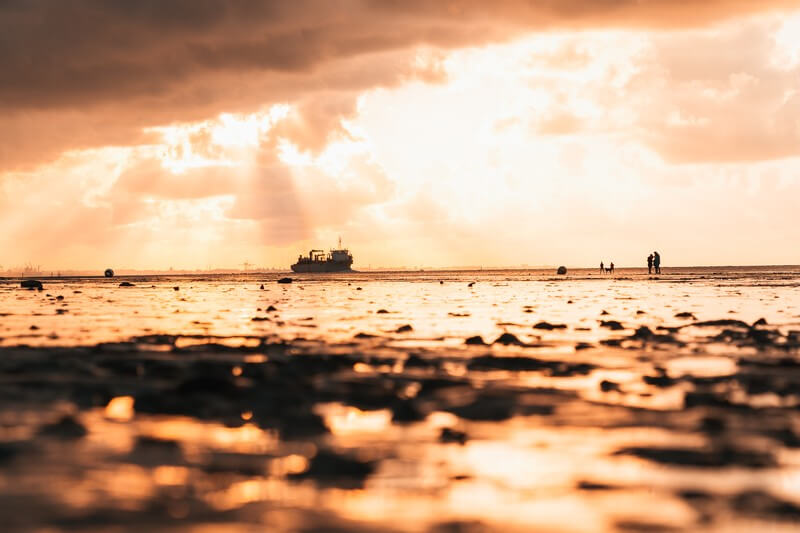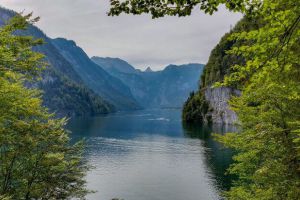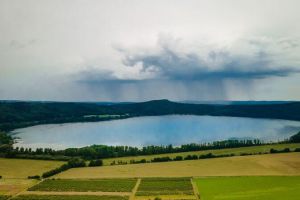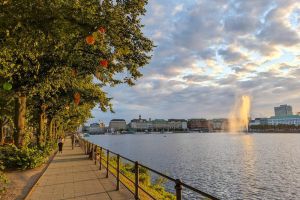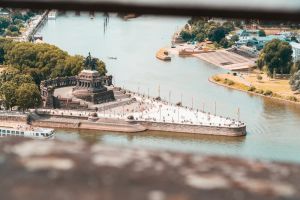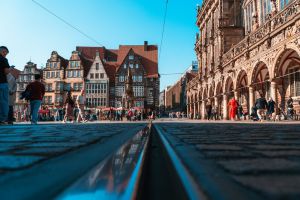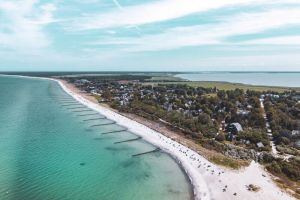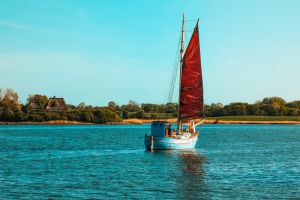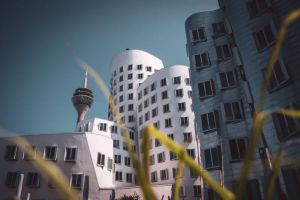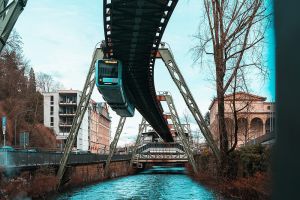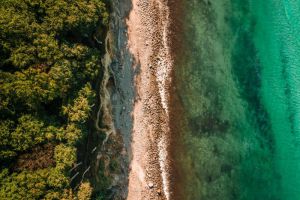In this article, I take you to a land of few words, of lighthouses and windmills, where a stiff breeze always blows and the tides determine people’s lives. A land where seagulls stare at lugworms and Captain Bluebear anchors his ship next to a dyke. But it also takes you to a region where you can’t see the forest for the fruit trees and to small, idyllic fishing villages in whose harbours crabs are traded almost like gold. So, put on your wellies, roll up your hoodie and come along this North Sea itinerary!
This North Sea itinerary takes you through Lower Saxony, always along the wonderful coast of the Wadden Sea. It mainly takes you to smaller towns and nature spots away from the large tourist crowds.
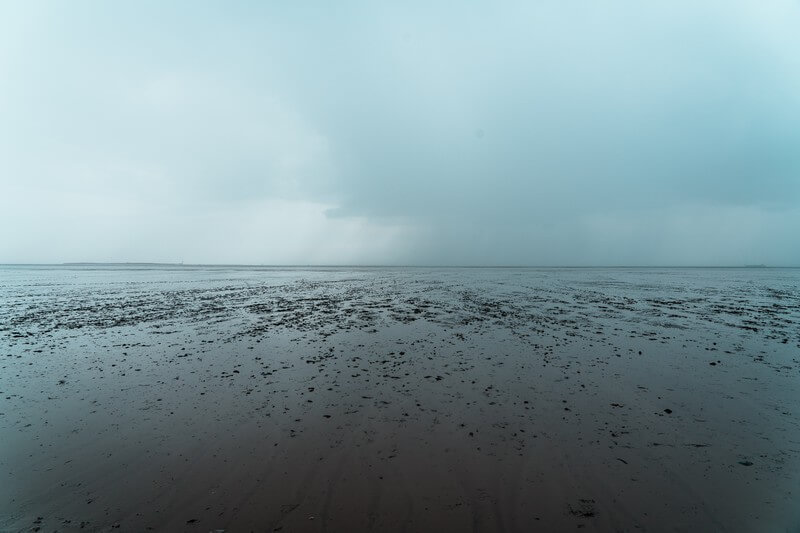
You start at the Dutch border, travelling all the way through East Friesland, the old country and as far as the Hanseatic city of Hamburg. I left out larger cities such as Wilhelmshaven or Bremerhaven on the route, but that doesn’t mean they aren’t worth a visit.
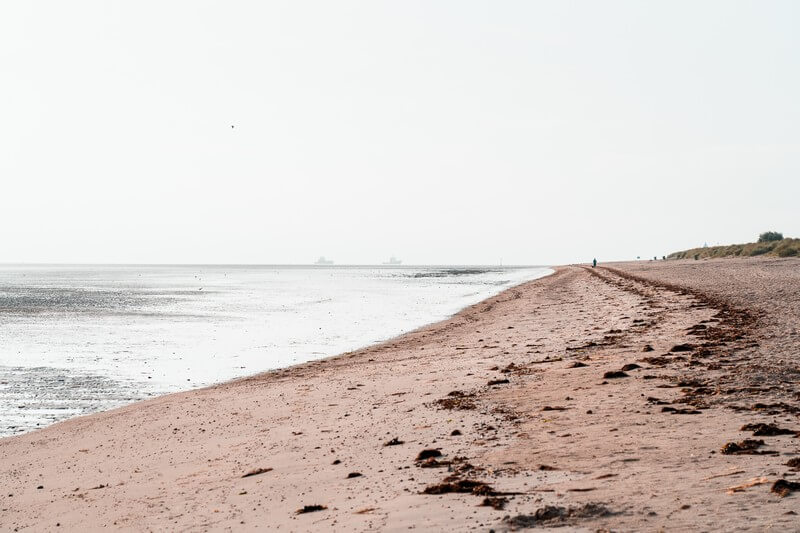
“Moin” is probably the word that is used the most in East Frisia. Whether in the morning, at noon or in the evening. But when I once came up with the outrageous idea of adding another “Moin” to the first “Moin”, I was very quickly recognised as a chatty tourist from the south… I could only interpret the astonished looks at the crab counter as “He talks a lot”. But I still got the delicious crab roll. But next time I’d rather just say “hello”. You don’t want to make yourself unpopular with the locals.
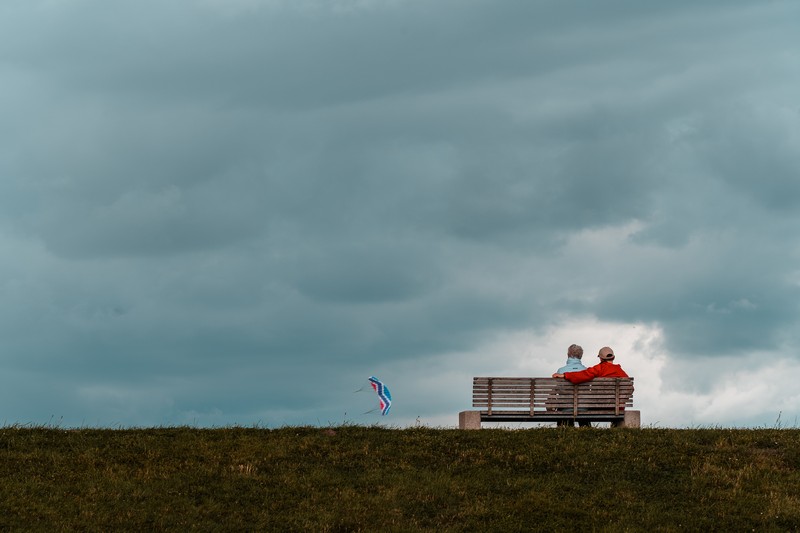
Along this route, you will also pass all the ferry towns from which tourists cross over to the islands, such as Norderney or Langeoog. However, a visit to one of the East Frisian Islands is not included in this article. If you want to do it anyway, you should plan more time. There are also day trips to some of the islands.
North Sea itinerary: How long?
The North Sea route described here can be completed in 5 days. With 7 days, you also have the option of staying a little longer in one place or another. However, if you also want to discover one of the North Sea islands or a few of the larger towns along the route, then I would recommend planning more days.
Accommodation on the North Sea coast
On my own route, I mainly stayed at campsites, which I always mention in the descriptions here in the article. There are some really great camping spots along the coast of Lower Saxony.
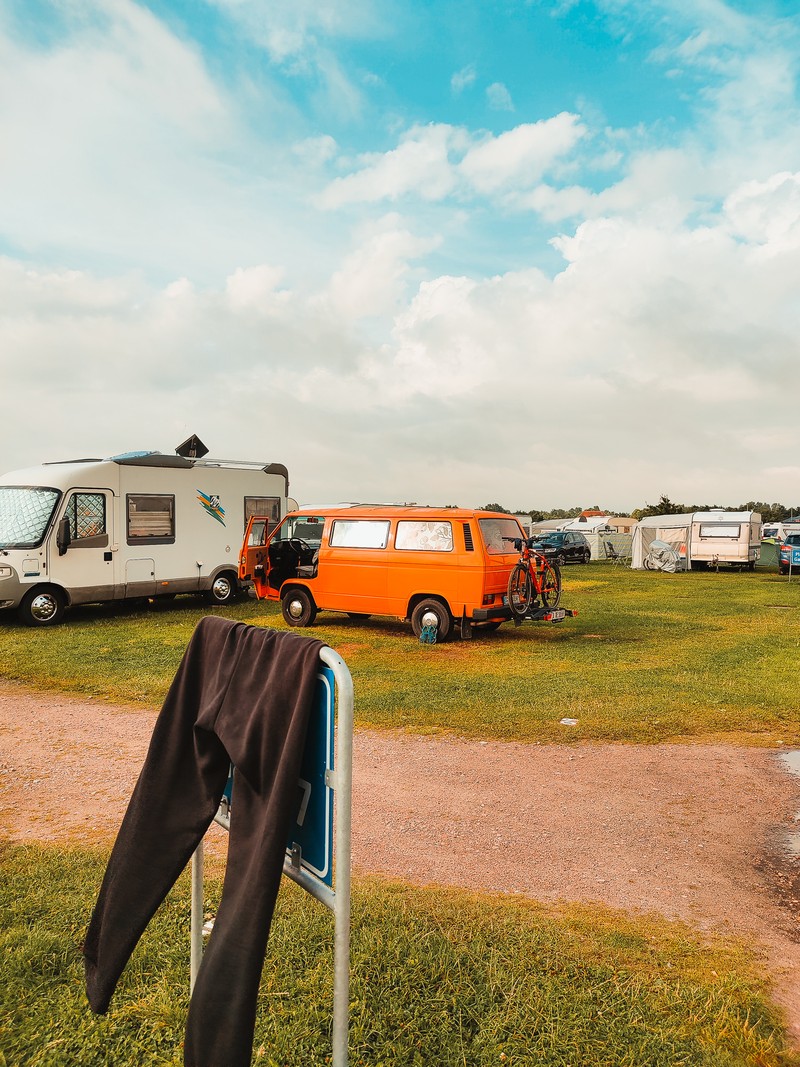
But if you’re travelling without a camper or with your family, a little more comfort won’t hurt. I therefore also recommend a few good hotels along the route from time to time, which are well located to make it easier to discover the surrounding region.
North Sea itinerary: route sections and places of interest
Enough of the introductory words. Now it’s time to start your road trip along the North Sea.
You can also find all the places and sights mentioned here on the map:
1. Kiekkaaste
The route starts on the German-Dutch coast near Bunde. There is a special lookout tower on high stilts here – called Kiekkaaste. To reach it, you even have to cross the border into the Netherlands once and then walk along a wooden path through the mudflats past the blowing reeds.
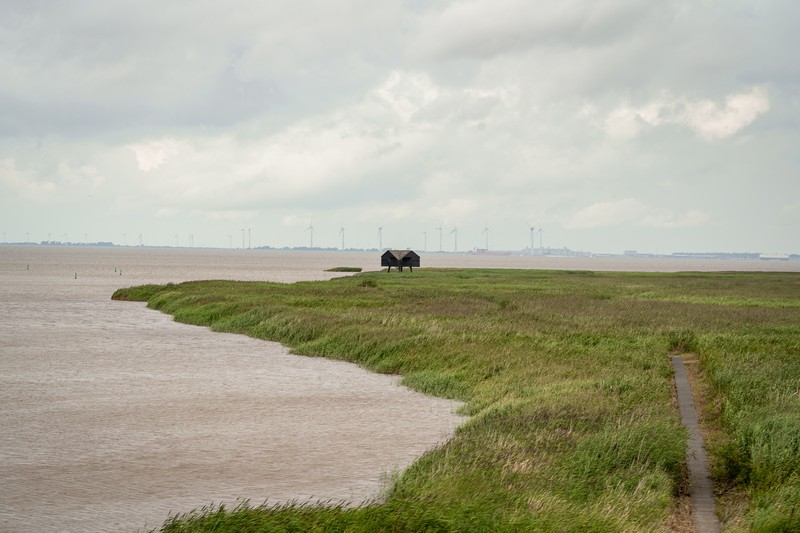
On arrival at the observation tower, you can watch the life in the mudflats from above. There are many birds, ducks and sometimes even seals to marvel at. It’s best to bring binoculars with you, and at high tide, wellies aren’t a bad idea either.
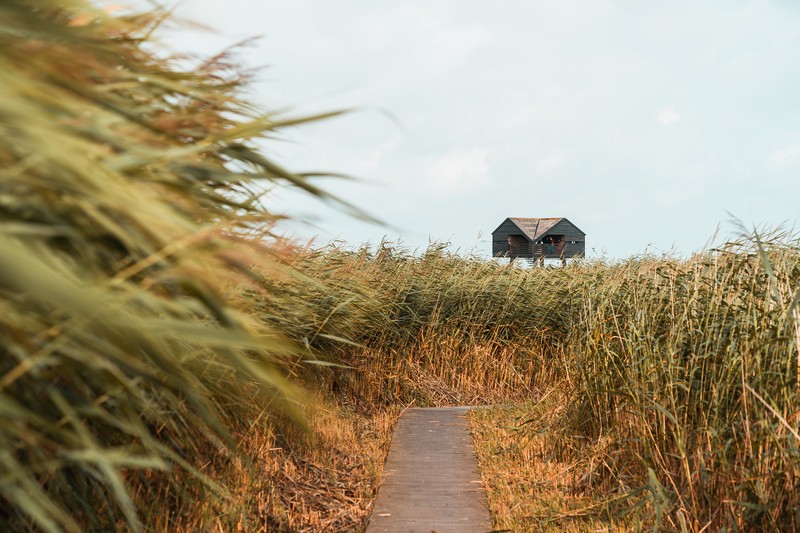
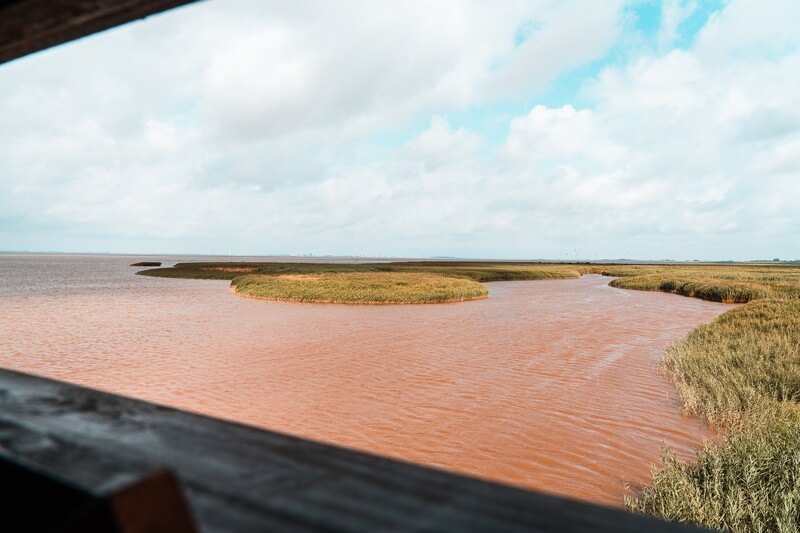
2. Town Leer
Continue eastwards to the small town of Leer.
If you are travelling with children, then the Miniaturland is definitely a great excursion option. Here you can also take a closer look at the region you will be travelling through on your road trip – East Frisia, Oldenburg and Ammerland – interactively and in miniature form on around 1500 m².
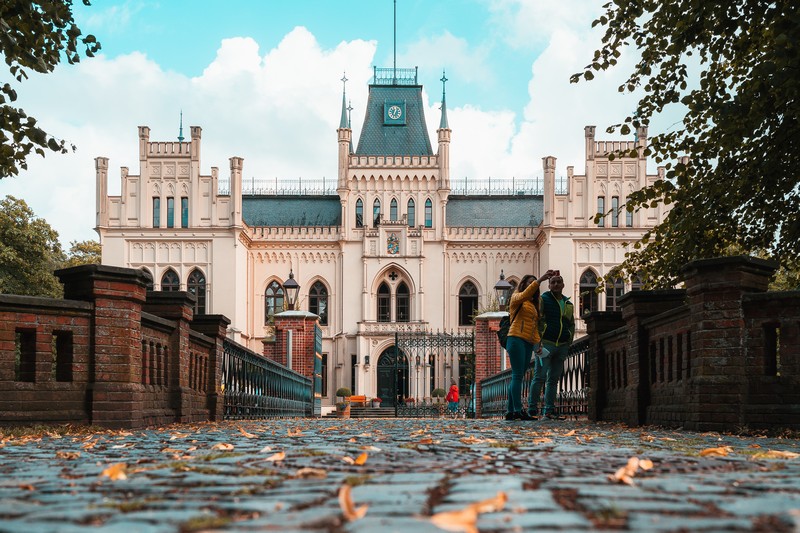
I also liked the Evenburg Castle with its beautiful English garden. You can visit it for free, but the entrance to the castle (€5, €8 with a guided tour) is also worth it in my opinion.

3. Suurhusen
If you thought the Leaning Tower of Pisa was the leanest tower in the world, then you were actually wrong.
Because the church tower at Suurhusen is 27.37 metres high and has an overhang of 2.47 metres. It therefore has an inclination of 5.19 degrees. For comparison: the leaning tower of Pisa only has an inclination of 3.97 degrees. Who would have thought that?
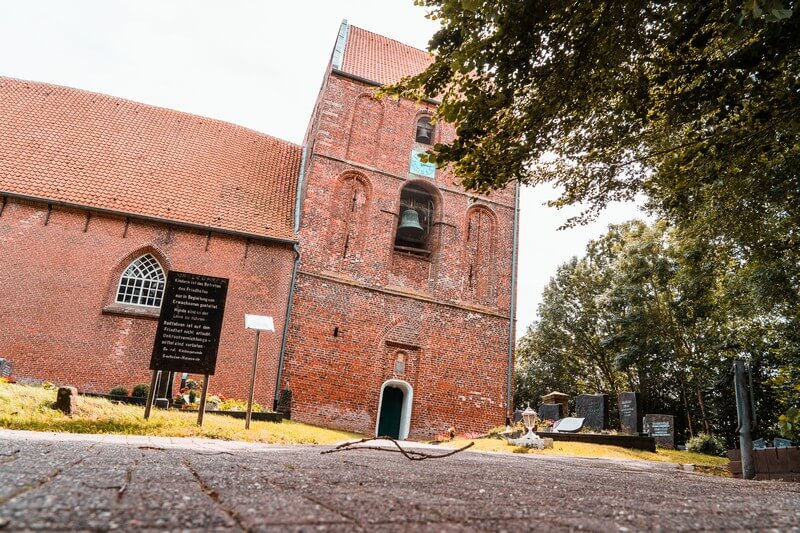
It’s best to see it for yourself during a short stopover. There is also a small café at the church tower.
4. Campen lighthouse
From one superlative to the next: one minute you’re looking at the most crooked tower in the world and just 20 kilometres further west you’re already at the tallest lighthouse in Germany: the Campen lighthouse with its 67 m height. It was built in the same year as the Eiffel Tower – 1892 – and there are 308 steps leading to the top. To enjoy the view from there, you pay €5 admission per adult.
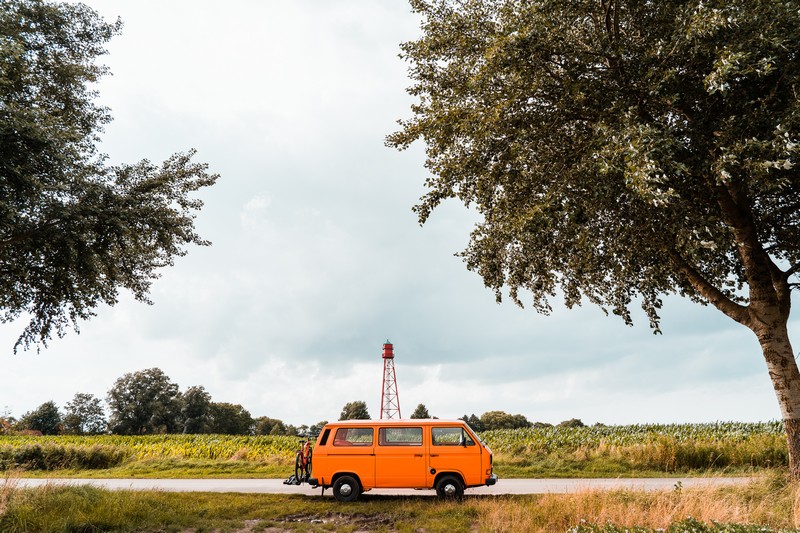
5. Greetsiel and Pilsum lighthouse
If you have seen the film “Der Außerfriesische” by Otto, then this lighthouse will look familiar to you. Because in the film, Otto lives in this yellow and red striped beauty, which is one of the most famous sights in East Frisia. You can’t actually spend the night here. But you can visit the inside of the tower on a guided tour for €5 (you can book such a tour here).

I also recommend a detour to Greetsiel, right next to the lighthouse. There’s always a lot going on here. There are restaurants, cafés and ice cream parlours. In Greetsiel harbour, you can also take one of the cutters out to catch crabs. The sailing times during my visit were 10:00, 12:00 and 14:00 every day.
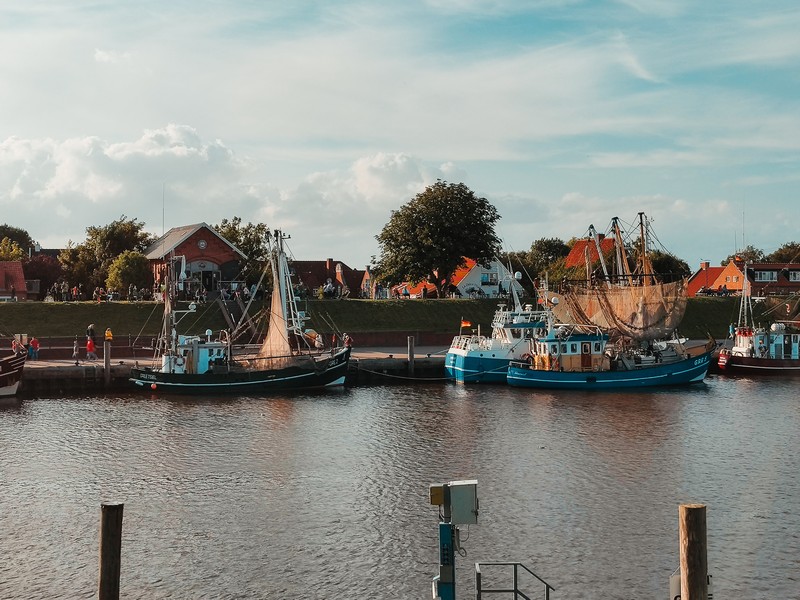
6. Seal sanctuary Norddeich
Have you ever asked yourself the following or similar questions:
- What do seals eat?
- Where do they stay?
- How do they get sick?
And even if not, it’s definitely worth visiting the Norddeich seal station for €10 admission. In addition to answers to these and many other questions about seals, you can also observe these amazing animals here. Seal pups that have lost their mother are taken in here. They are then raised and prepared for a life in the wild in the North Sea.
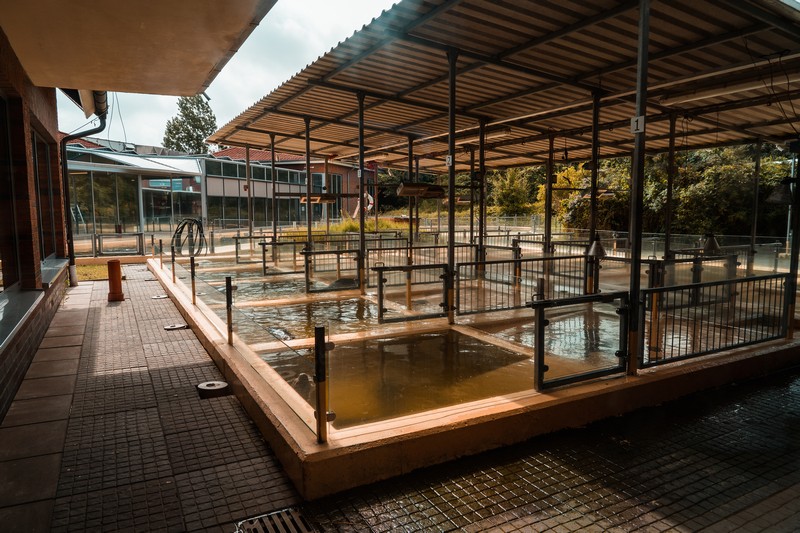
There are many interactive elements in the exhibition that will not only appeal to the little ones. The highlight, however, are the glass windows through which you can look at the tanks. At certain times, the animals are fed or weighed. This is an experience for young and old alike.
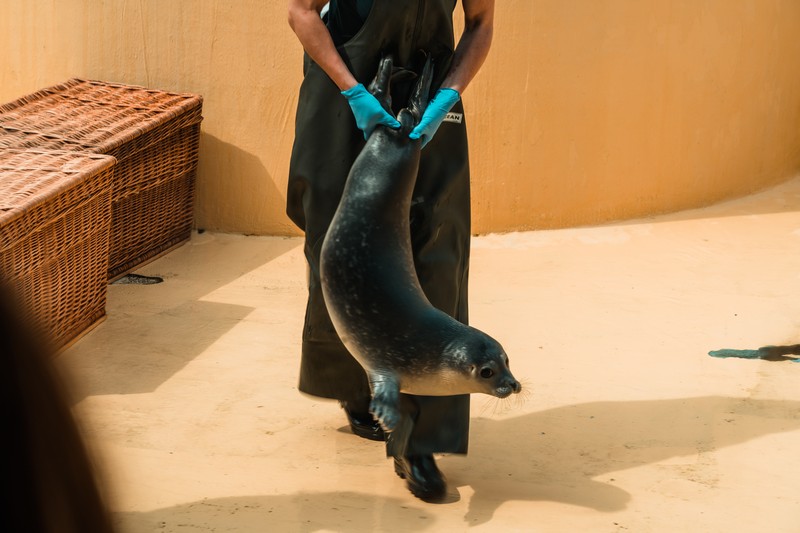
7. LĂĽtetsburg Castle
LĂĽtetsburg Castle is a privately owned water castle and can therefore only be visited from the outside. A family of counts has lived here for generations.
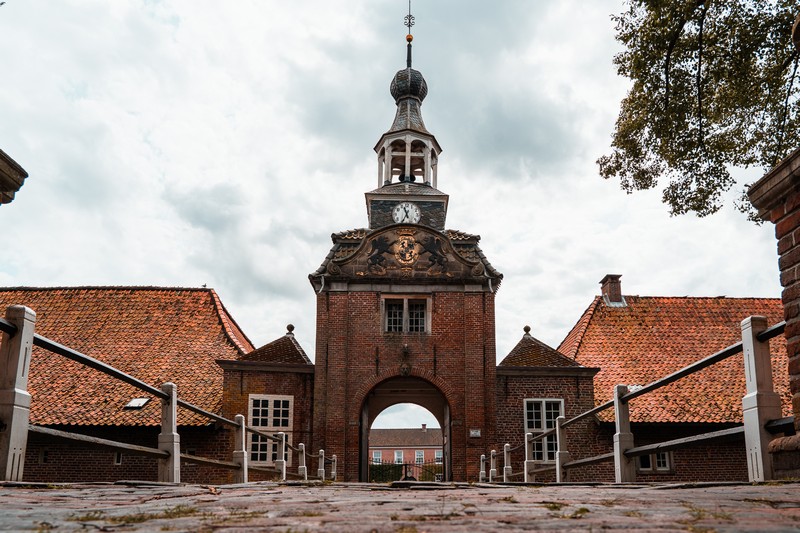
There is, however, a very beautiful castle park around the private grounds of the castle with many rhododendron plants and idyllic places to linger. This costs €2 admission. You pay another €1 for parking.
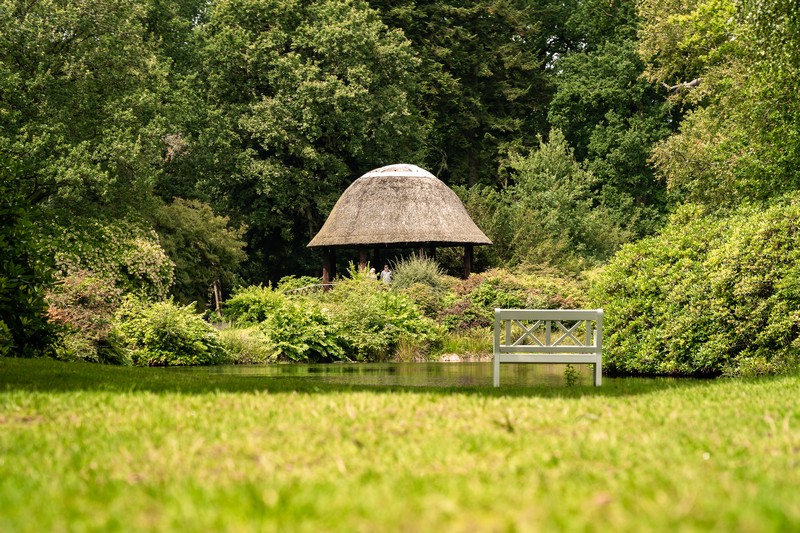
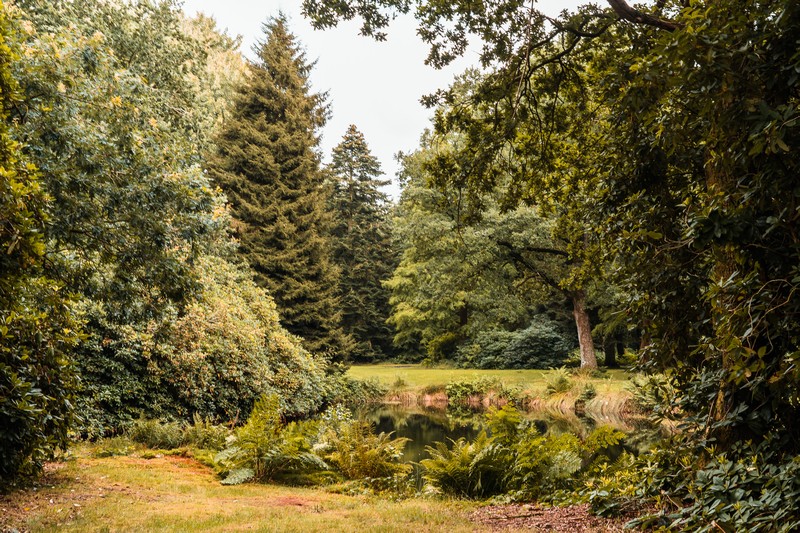
8. Neuharlingersiel
Like almost all of the Siel villages, Neuharlingersiel is located directly on the dyke. It is the gateway to the island of Spiekeroog. You can also book day trips to the island here.
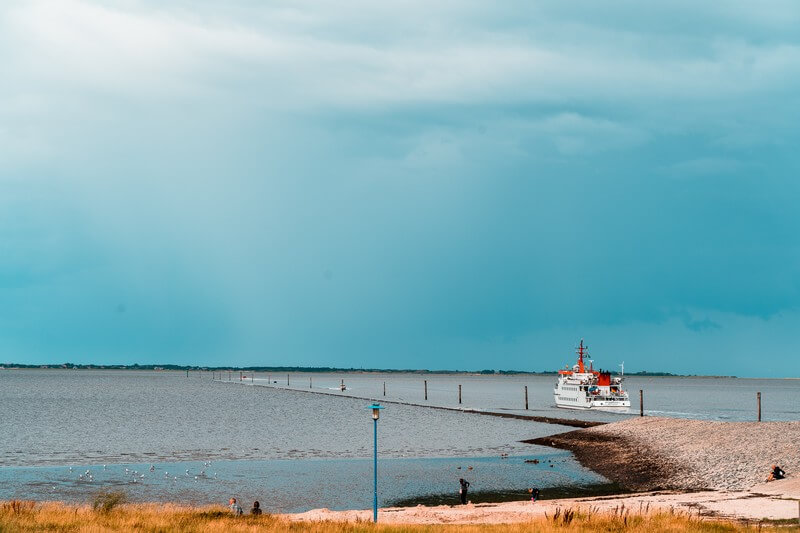
The old cutter harbour is the tourist centre and heart of Neuharlingersiel. Aged cutter boats anchor here in front of the magnificent harbour houses, which are home to restaurants, hotels and cafés.
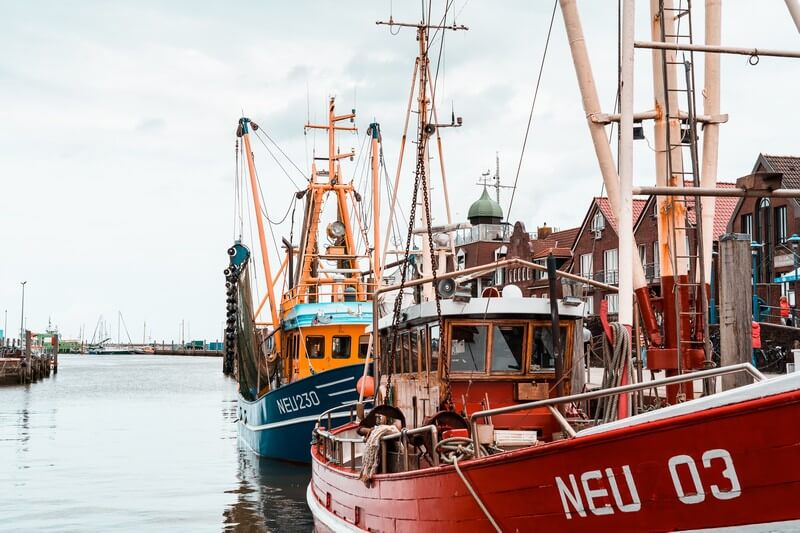
You should definitely try the crab rolls for €3, even if the queue in front of the mobile fish shop is often long. In addition to crabs, there are also many other fish delicacies here.
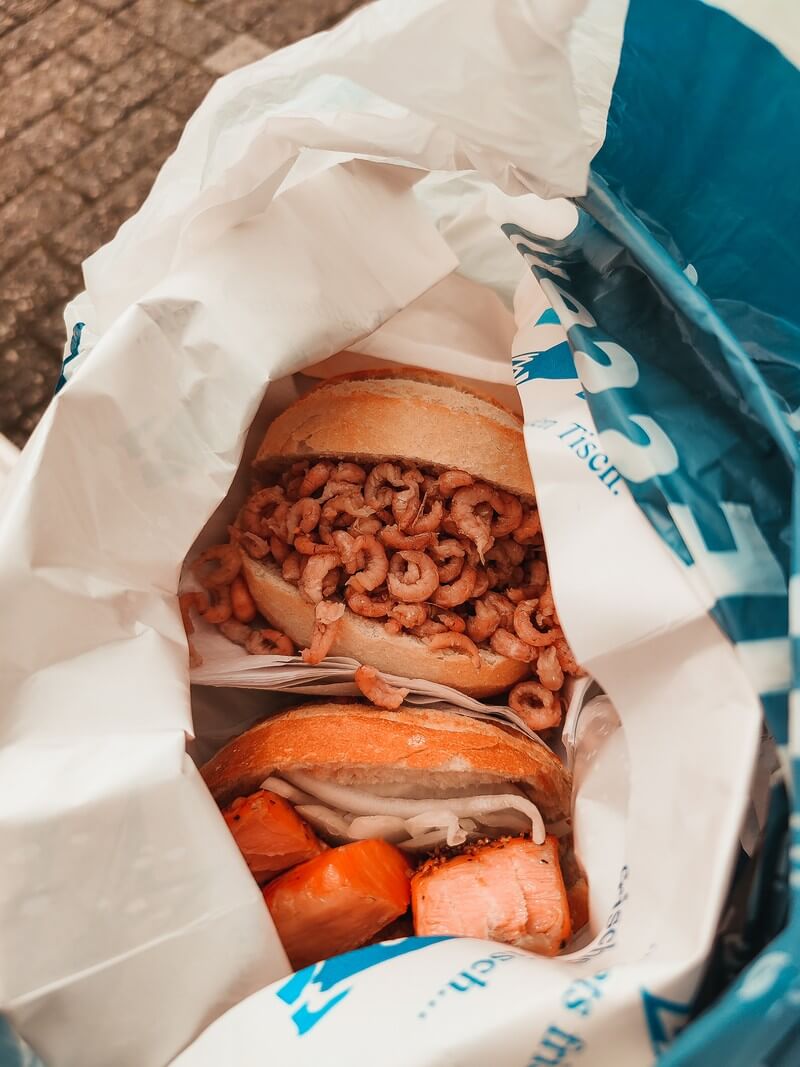
The beach is right next to the harbour and is a great place for a stroll. You can also simply hire a beach chair and relax for a while.
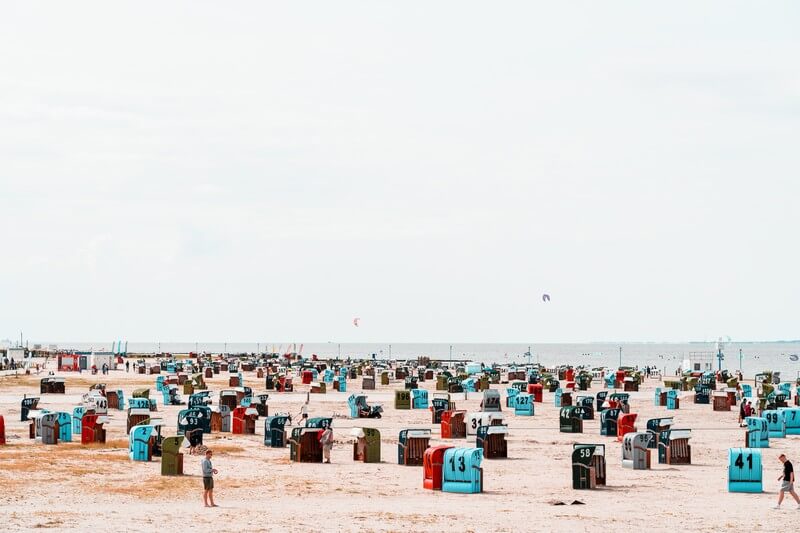
The Museum of the German Maritime Search and Rescue Association is also worth a visit for €2. Here you can hear and read many stories about sea rescue and there are also some maritime treasures to discover.
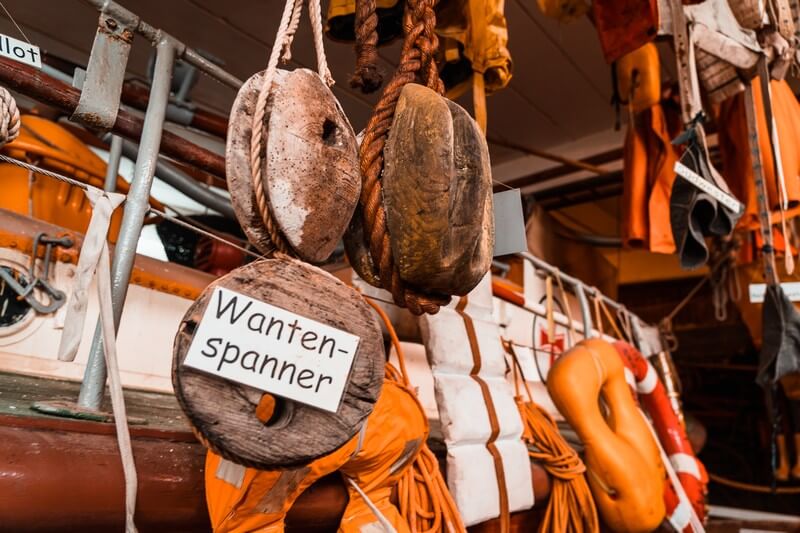
9. Carolinensiel
The historic harbour of Carolinensiel is worth at least one stopover. Boats were once built here on the so-called slipways, which are slanted into the water. Today there is a museum harbour with many old and restored flat-bottomed ships and smaller sailing boats. You can even buy some of them, provided you have the necessary change, of course.
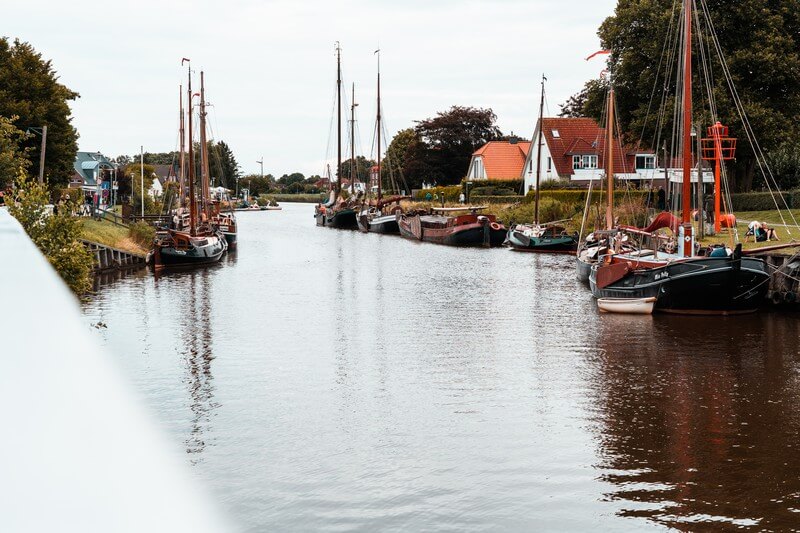
A highlight in Carolinensiel is a trip on the paddle steamer Concordia 2. There is also a weekly market in Carolinensiel every Tuesday from 8 am to 2 pm.
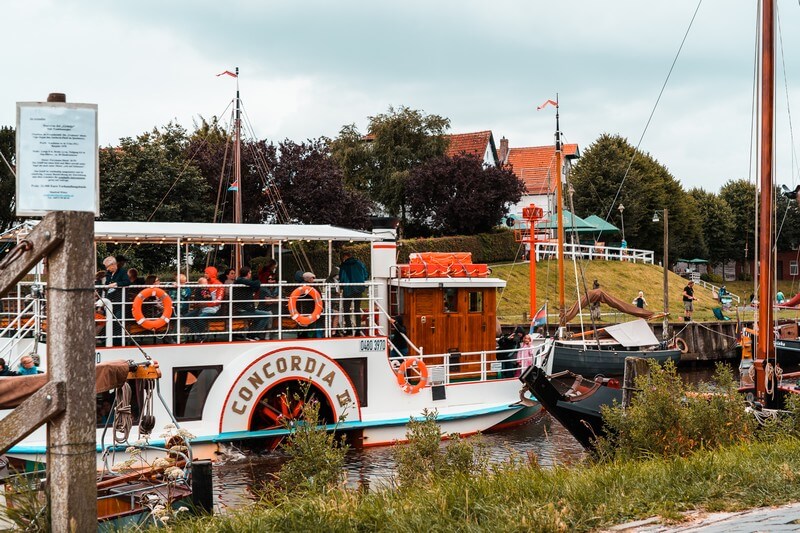
10. Schillig
Now you leave East Frisia in the direction of Wangerland to Schillig. Here you will find the largest campsite in Lower Saxony with almost 1500 pitches. There is also a great stretch of beach here. Especially in the morning, when most people are still sleeping in their warm caravans, you should take a walk along here and wade through the mudflats at low tide.
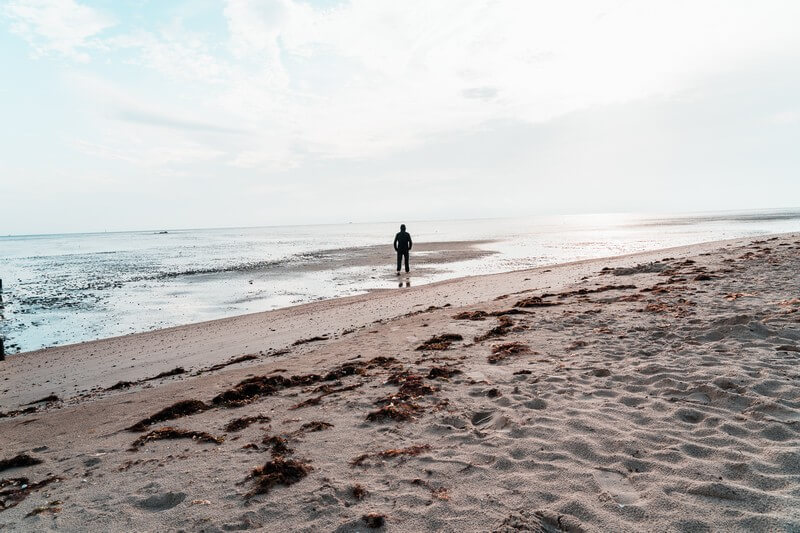
11. Jever
Jever is best known as a beer brand. But the town of Jever is also great. You can take a great stroll through the alleyways and take a look at the historic houses. You should also definitely visit the Jever Castle with its museum surrounded by an idyllic English garden (admission €6). The exhibition inside, which is spread over four floors, is really great. For example, you can discover what life was like at the beginning of the 20th century in some authentically furnished parlours.
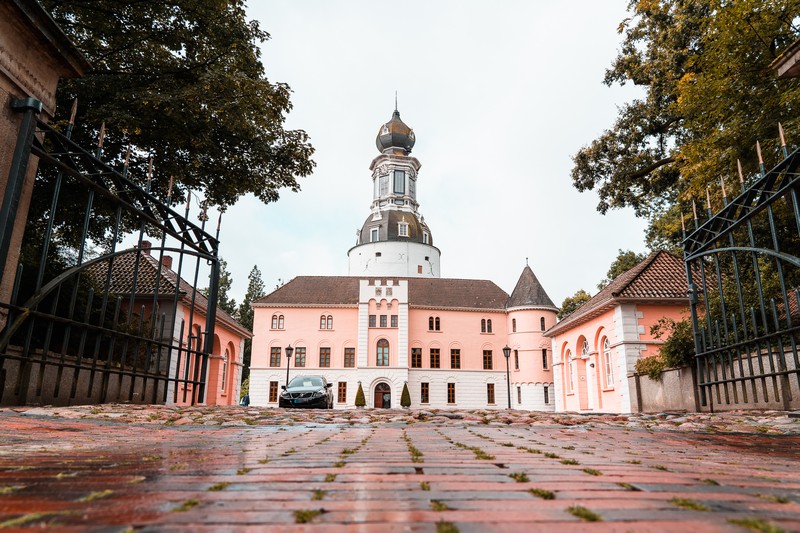
The castle tower dates back to the 14th century. From up there, you can also enjoy the fantastic view of the surrounding area of Jever.
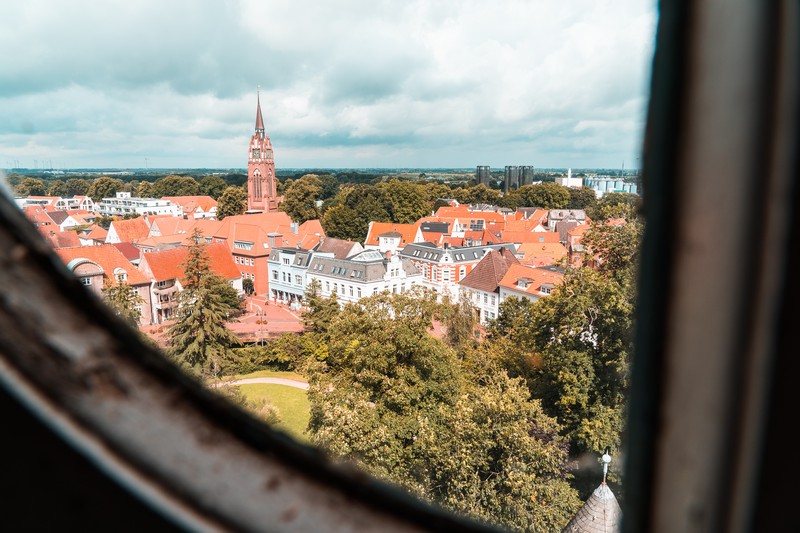
12. Gödens Castle
You can make a short stopover at Gödens Castle. It is surrounded by a beautiful park where you can spend a few quiet minutes. However, you can only visit the castle itself from the outside. It is privately owned.

13. Rutteler MĂĽhle
The Rutteler windmill is the only one in Germany where wood is still sawn. In addition, a lot of flour is still produced here with the help of the wind.
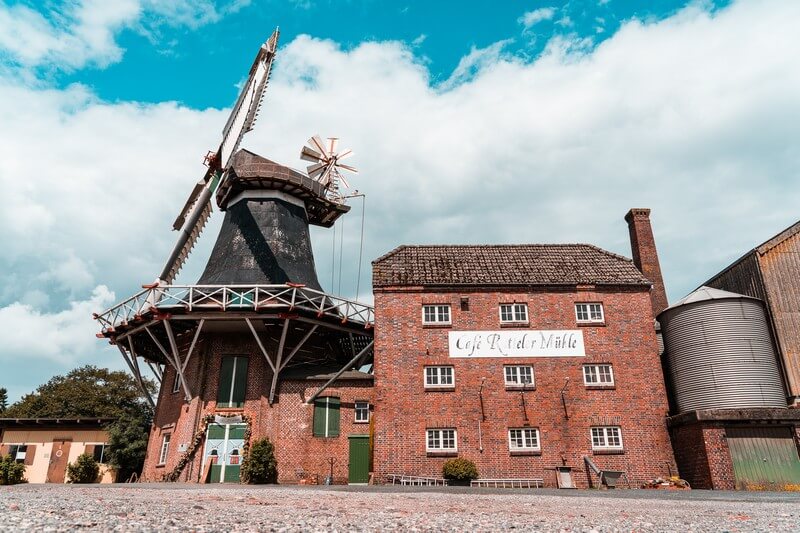
In addition to the windmill, there is also a café where you can watch the mill over a coffee and cake.
14. Langwarder Groden
Between the cranes of Bremerhaven’s container terminals and the smoking chimneys of Wilhelmshaven, a particularly great natural highlight awaits you – the Langwarder Groden. Here you can hike along a 5-kilometre circular trail through the Wadden Sea. You will also have to walk across wooden footbridges laid over the water and along the way you will find numerous information boards about the region, the dyke and the local flora and fauna.
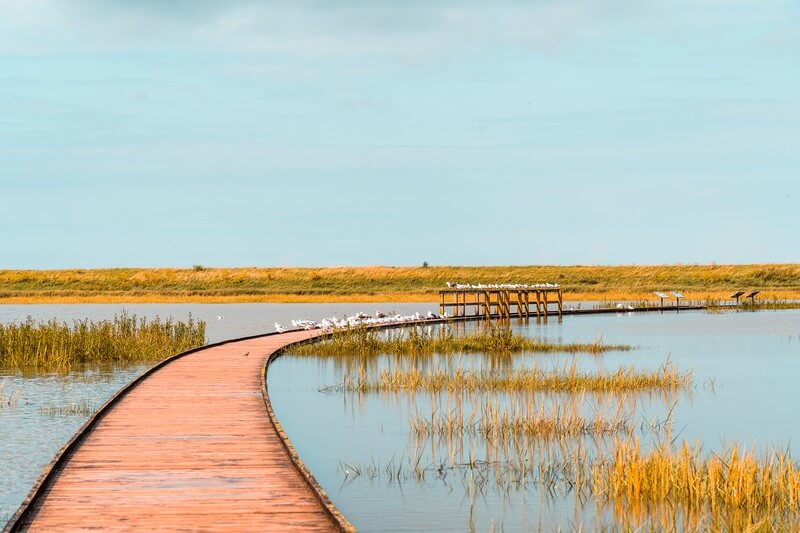
A free pair of binoculars is available at the end of the route. You can use them to recognise Bremerhaven or Wilhelmshaven on the other side very well, but perhaps also one or two local birds.

15. Cuxhaven – Camping Lake Achtern Diek
Cuxhaven is definitely worth an extra visit. However, I skipped it on my road trip and instead stopped at the Camping site See Achtern Diek about 14 kilometres to the east. It’s great for one or maybe even several overnight stays. It has its own lake with waterskiing facilities and plenty of ways to spend your free time.
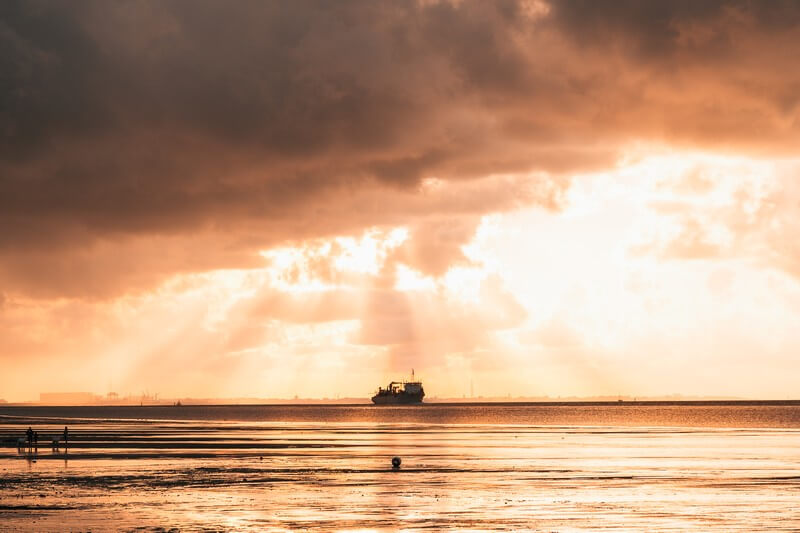
Of course, there is also no shortage of a beach from which you have a wonderful view of the Wadden Sea all the way to Cuxhaven, especially in the evening at sunset.
16. Altes Land – Stade
Now you leave the Wadden Sea and head into the so-called “Altes Land” (which translated litarally means old country) – it is the largest contiguous fruit-growing area in Europe. No matter where you look, there are whole fields full of fruit trees everywhere, mostly apple and pear trees.
I found the Hanseatic town of Stade particularly beautiful. This town is also a highlight in the region and the gateway to the “Altes Land” region.
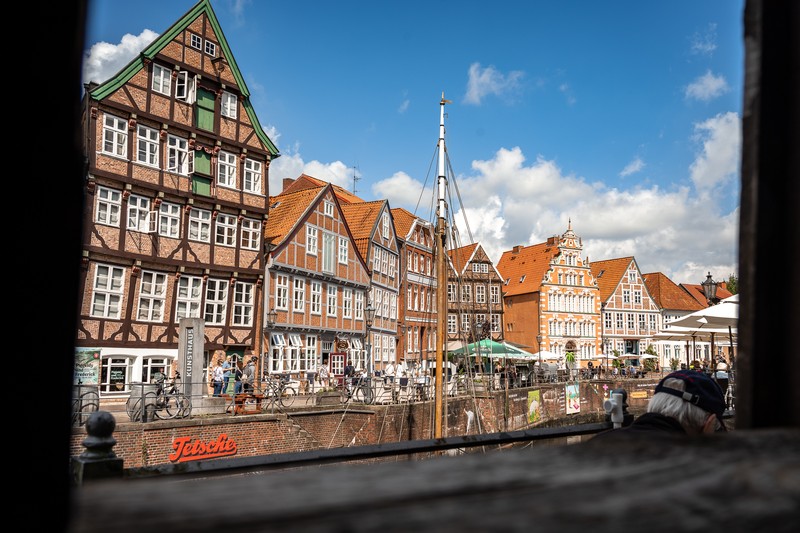
While strolling through the city, you can discover the many historic half-timbered houses with their gabled façades. Treat yourself to a crab sandwich at the old harbour and visit the Schwedenspeicher museum at the “Schwinge” and admire the cartoons by artist Tetsche, which are displayed all over the walls here.
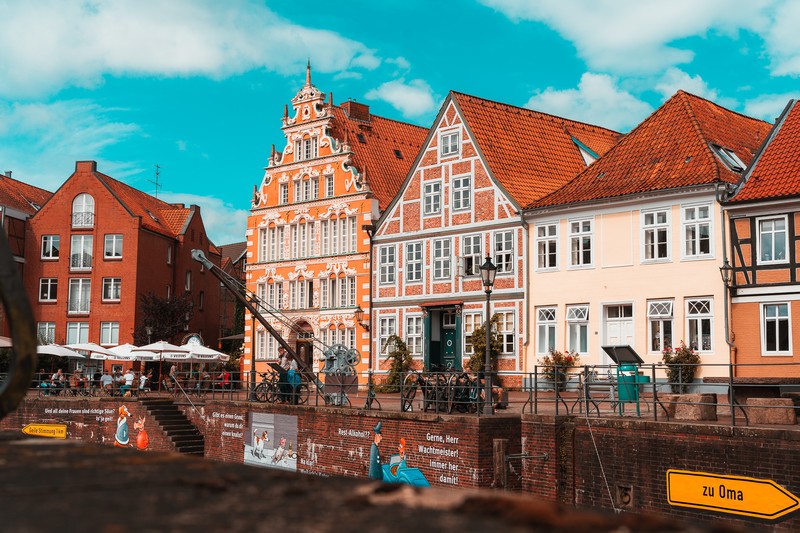
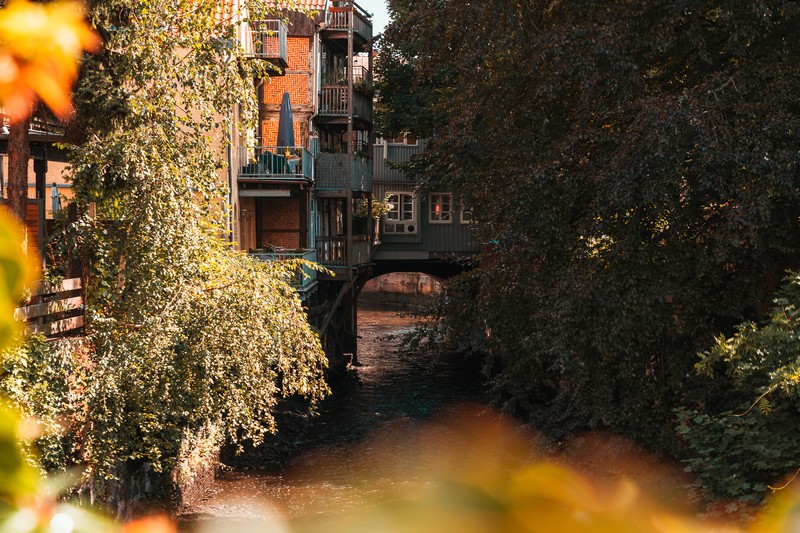
17. Altes Land – Hogendiekbrücke
A little further east of Stade you will find this great bridge from 1975, which was renovated in 2014. It is a great photo opportunity and therefore worth a stopover.
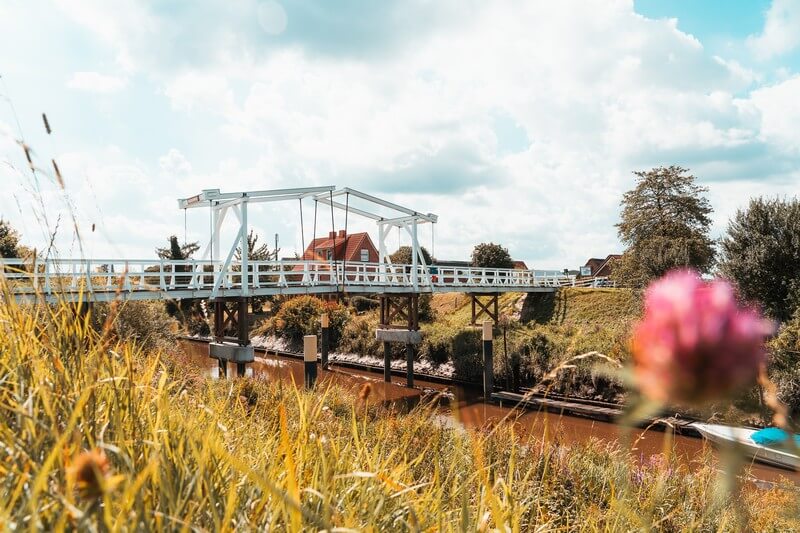
18. Altes Land – Jork
In the heart of the Altes Land, surrounded by vast orchards, lies the picturesque town of Jork.
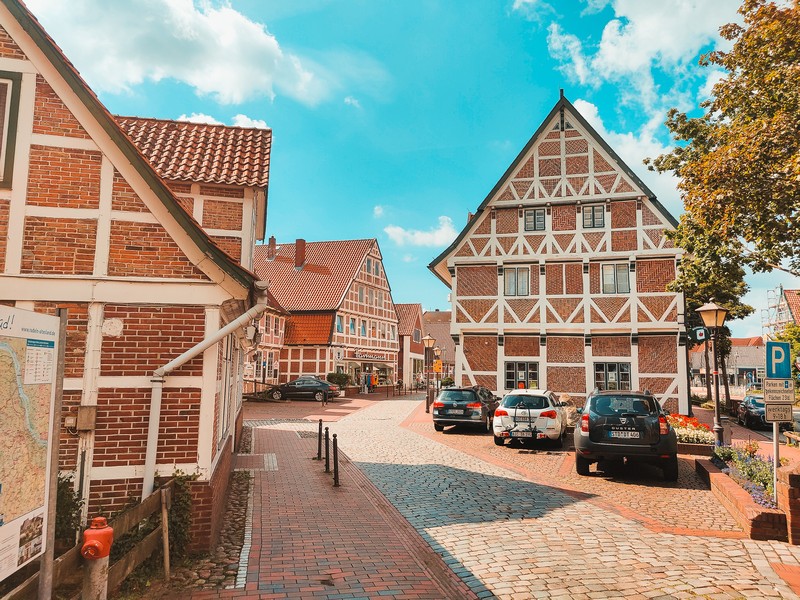
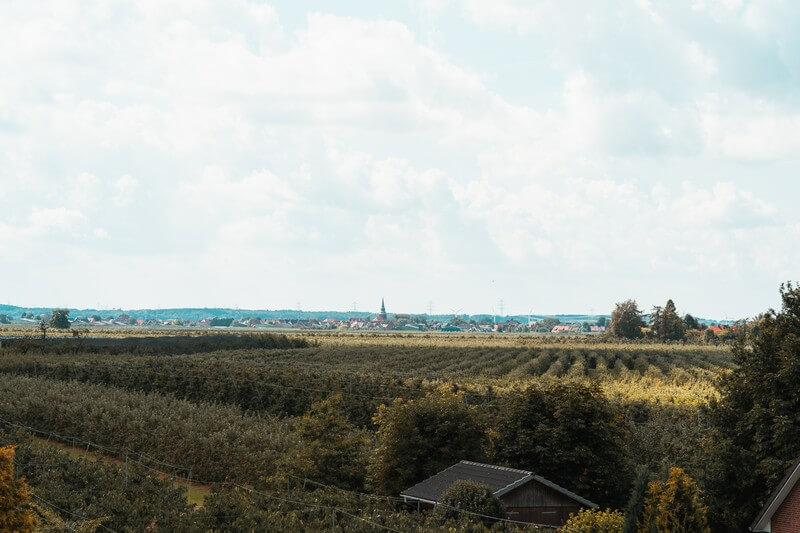
It’s also worth exploring the flat area by bike. You can stop every now and then to take a closer look at the apple orchards. Of course, you can also do this without a bike.
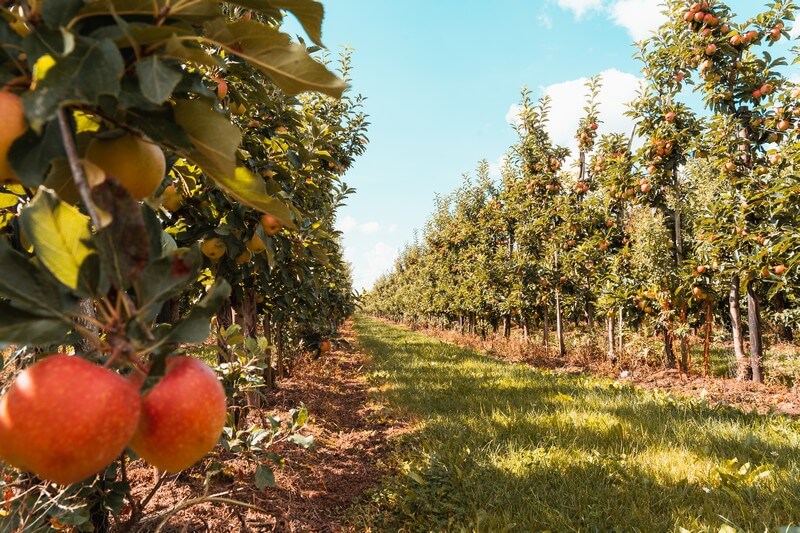
I can also recommend a visit to one of the many farm shops in the region. Not only can you buy fresh apple juice there, but also all kinds of other home-made products from the region – perfect as a souvenir to take home.
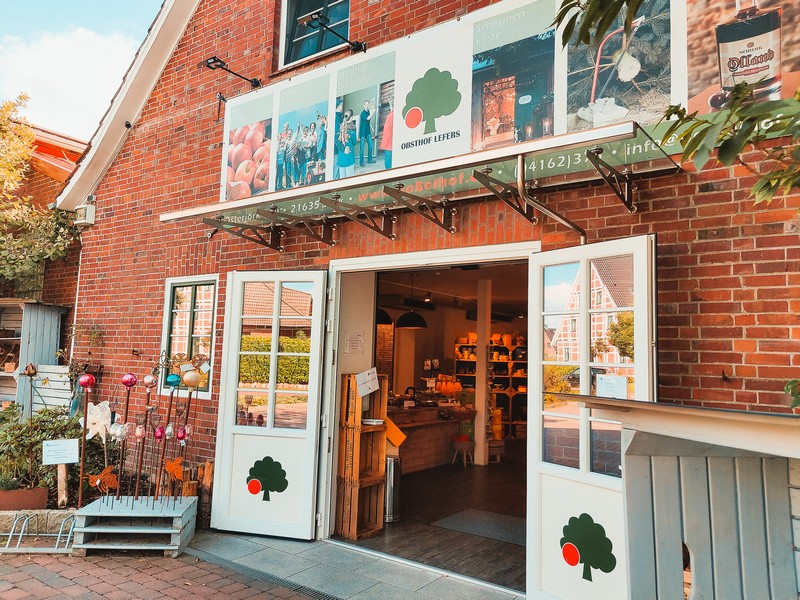
As you can see, there is a lot to discover along the North Sea from East Frisia to the Altes Land. Which other highlight along this North Sea route do you know? I look forward to your comment.
Tools & services I recommend for your trip:*
📶 Flexible and affordable mobile Internet worldwide
🚁 My drone for aerial photography
🚗 Find and compare cheap rental cars
🎟 Find and book cool activities
🔒 Secure Internet connection with NordVPN
*Note: These links are affiliate links. If you book through them, I will receive a small commission without it being more expensive for you. A purchase from you via these links helps me to continue offering free content without annoying ads on this website. Thank you for your support! I really appreciate it!

